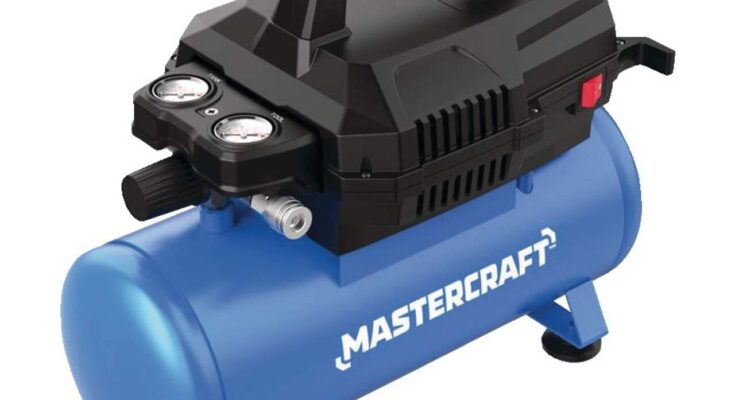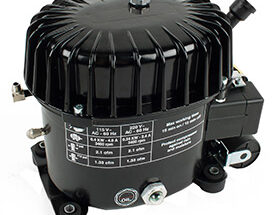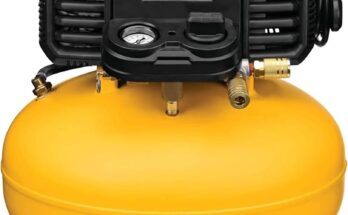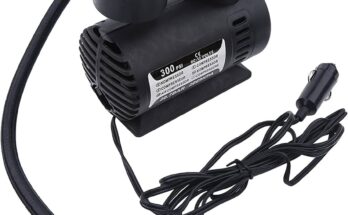Contrary to popular belief, determining what size air compressor i need is not as straightforward as it may seem. Many individuals assume any air compressor will suffice, but the reality is, selecting the appropriate size is vital for maximizing performance and efficiency. In this in-depth guide, we’ll delve into comprehending what size air compressor do i need and factors to contemplate when making your choice.
Understanding What Size Air Compressor Do I Need
When we talk about what size air compressor do i need, we’re referring to the capacity and power of the compressor to deliver air. It’s not just about physical dimensions; it’s about the compressor’s ability to meet the air demands of your tools and applications. To put it simply, what size air compressor do i need determines how much air it can generate and store at any given time.
Several key factors contribute to determining the size of an air compressor:
CFM (Cubic Feet per Minute)
CFM measures the volume of air that the compressor can deliver in one minute. It’s a crucial factor to consider because different air tools require varying CFM to operate efficiently. For example, a paint sprayer may require higher CFM than a pneumatic nail gun.
PSI (Pounds per Square Inch)
PSI indicates the pressure at which the air is delivered by the compressor. Most air tools operate within a specific PSI range, so it’s essential to match the compressor’s output to the tool’s requirements. Using a compressor with insufficient PSI can result in poor tool performance.
Tank Size
The tank size determines how much compressed air the compressor can store before needing to refill. A larger tank size allows for more extended periods of continuous operation without interruption. This is particularly important for tools that require a constant air supply, such as sanders or grinders.
Horsepower
Horsepower (HP) is a measure of the compressor’s motor power. While horsepower alone doesn’t determine the compressor’s size, it influences its overall performance. Higher horsepower generally means the compressor can deliver more air at a faster rate.
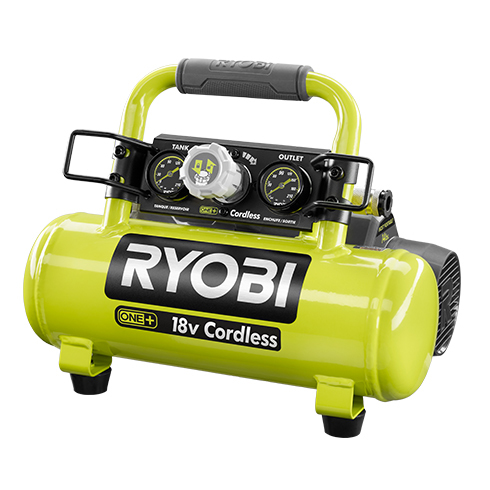
Photo By: ryobitools.com
Factors to Consider When Choosing Air Compressor Size
Now that we understand the components that contribute to what size air compressor do i need, let’s discuss the factors you should consider when selecting the right compressor for your needs:
Type of Applications
Consider the type of tasks or projects you’ll be using the air compressor for. Are you a DIY enthusiast working on home projects, or are you a professional contractor needing a compressor for heavy-duty applications? Understanding your intended use will help narrow down your options.
Air Tool Requirements
Different air tools have different CFM and PSI requirements. Make a list of the tools you’ll be using with the compressor and note down their specifications. This will help you determine the minimum CFM and PSI ratings your compressor should have to support your tools adequately.
Future Expansion
Think about your future needs and whether they might require a larger compressor. Investing in a slightly larger compressor now can save you from having to upgrade in the future if your needs change or expand.
Budget and Space Constraints
Finally, consider your budget and the physical space where you’ll be placing the compressor. While it’s tempting to go for the biggest and most powerful compressor available, it’s essential to strike a balance between performance, cost, and space requirements.
Determining Your Air Compressor Needs
Before you can choose the what size air compressor do i need, you need to assess your specific requirements. Here are some steps to help you determine your needs:
1. Identify Your Applications
Begin by making a list of the applications or tasks you’ll be using the air compressor for. Are you primarily using it for inflating tires, powering pneumatic tools, or running machinery? Understanding your intended applications will guide you in selecting the appropriate compressor size.
2. Estimate CFM Requirements
Once you’ve identified your applications, research the CFM (Cubic Feet per Minute) requirements for each tool or task. CFM indicates how much air volume the compressor needs to deliver to operate the tool effectively. Make sure to consider the highest CFM requirement among your tools to ensure compatibility with the compressor.
3. Determine PSI Needs
Next, consider the PSI (Pounds per Square Inch) requirements of your tools. PSI measures the pressure at which the compressor delivers air. Different tools have varying PSI requirements, so it’s essential to choose a compressor that can meet the highest PSI requirement among your tools.
4. Factor in Duty Cycle
The duty cycle refers to the amount of time the compressor can run continuously without overheating. Some compressors have a higher duty cycle than others, making them suitable for continuous or heavy-duty use. Consider your intended usage patterns and select a compressor with an appropriate duty cycle.
5. Consider Additional Features
Think about any additional features or capabilities you may need, such as portability, noise level, or oil-free operation. These factors can impact your overall satisfaction with the compressor and its suitability for your specific needs.
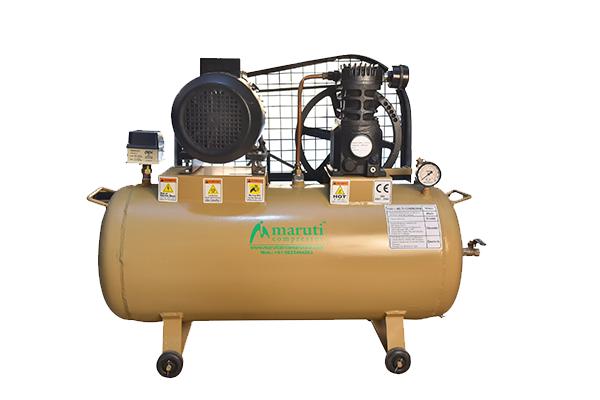
Photo By: smartsellermart.com
Choosing the Right Air Compressor Size for Different Applications
Now that you’ve assessed your requirements, it’s time to match them with the right what size air compressor do i need for different applications. Here are some recommendations:
1. Home Use and DIY Projects
For light-duty tasks like inflating tires, powering nail guns, or operating small air tools, a compact and portable air compressor with a modest CFM and PSI rating is sufficient. Look for models with tank sizes ranging from 1 to 6 gallons.
2. Painting and Finish Work
Paint sprayers and other finish tools require higher CFM and PSI to deliver a smooth and consistent finish. Choose a compressor with a larger tank size (6 gallons or more) and a higher CFM and PSI rating to support these applications effectively.
3. Automotive Work
Automotive applications such as impact wrenches, ratchets, and air sanders demand higher CFM and PSI for optimal performance. Consider a larger, stationary compressor with a higher horsepower rating and a large tank size to handle the air demands of these tools.
4. Industrial and Commercial Use
For heavy-duty industrial or commercial applications, such as operating air-powered machinery or running multiple tools simultaneously, a large stationary compressor with a high CFM and PSI rating is necessary. Look for models with duplex or rotary screw configurations for continuous operation.
In conclusion, choosing what size air compressor do i need depends on your specific applications, requirements, and budget. Whether you’re a homeowner tackling DIY projects or a professional mechanic working in a busy auto shop, there’s a compressor out there to meet your needs. By carefully considering the features, pros, and cons of each option, you can make an informed decision and select the perfect air compressor for your applications.
FAQs
Q: What factors should I consider when choosing an what size air compressor do i need? A: When selecting an air compressor size, consider factors such as the type of applications you’ll be using it for, the CFM and PSI requirements of your tools, the duty cycle of the compressor, and any additional features you may need.
Q: How do I determine the CFM and PSI requirements for my tools? A: You can typically find the CFM and PSI requirements for your tools in their user manuals or specifications. If not, you can contact the manufacturer or use online resources to estimate their requirements based on the type and size of the tool.
Q: Can I use a smaller air compressor for tasks that require higher CFM and PSI? A: It’s not recommended to use a smaller air compressor for tasks that require higher CFM and PSI, as it may result in poor tool performance and potential damage to the compressor. It’s best to match the compressor’s specifications to the requirements of your tools.
Q: What is the duty cycle of an air compressor, and why is it important? A: The duty cycle refers to the amount of time a compressor can run continuously without overheating. It’s essential to consider the duty cycle when selecting a compressor, especially for applications that require continuous operation, to prevent overheating and damage to the compressor.
Q: Are there any drawbacks to using a larger air compressor for smaller tasks? A: While using a larger air compressor for smaller tasks won’t necessarily harm the tools or the compressor itself, it may be overkill in terms of cost and space. Larger compressors tend to be more expensive and take up more room, so it’s essential to consider your specific needs and budget before making a decision.
Q: Can I upgrade my air compressor in the future if my needs change? A: Yes, you can typically upgrade your air compressor in the future if your needs change. However, it’s essential to consider factors such as compatibility with existing tools, space requirements, and budget constraints when upgrading to a larger or more powerful compressor.
Q: How do I maintain and care for my air compressor to ensure longevity? A: Regular maintenance is crucial for ensuring the longevity and performance of your air compressor. This includes tasks such as checking and replacing filters, draining moisture from the tank, lubricating moving parts, and inspecting hoses and fittings for leaks. Refer to the manufacturer’s guidelines for specific maintenance instructions.
